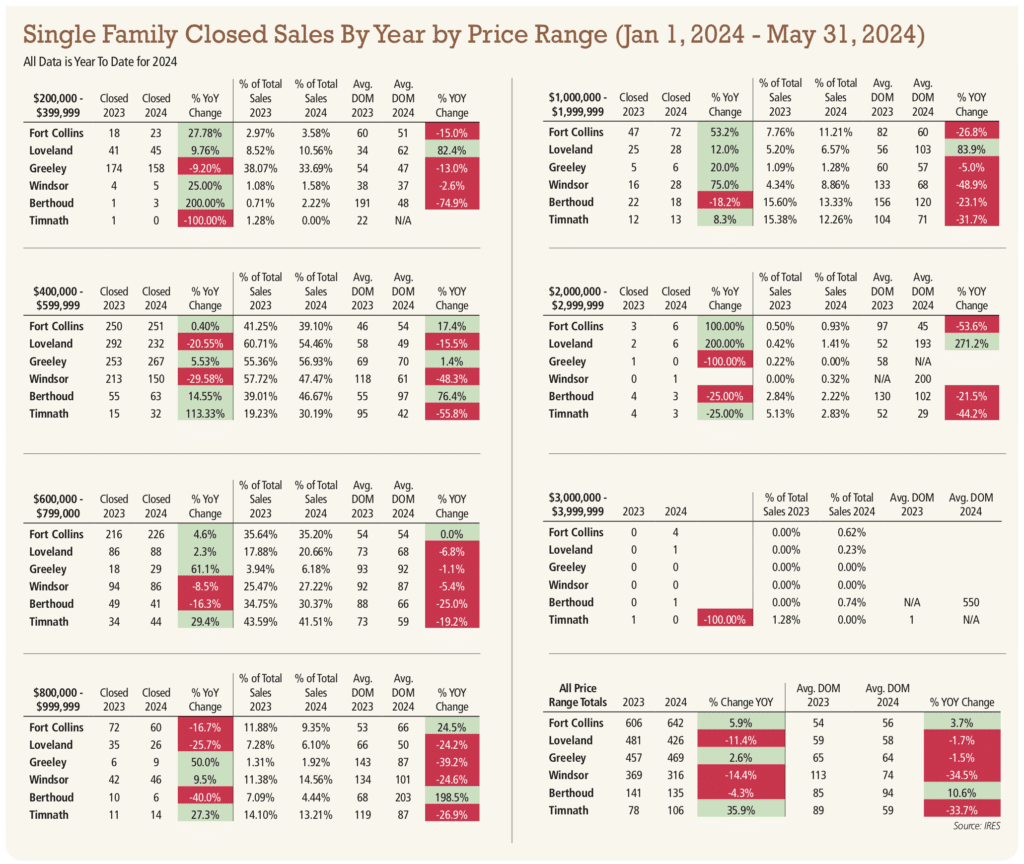Wells: Note to sellers – Light sales totals belie heavy buyer demand
On the surface, it might appear that housing demand is flat across Northern Colorado.
After all, total sales in the region’s six largest markets (Fort Collins, Greeley, Loveland, Windsor, Berthoud, Timnath) were lagging 1.8% behind last year’s totals through the first five months of the year.
But don’t let the slim sales figures fool you. In fact, homebuyers are showing a sizable appetite for real estate in Northern Colorado.
The proof is in the pace at which sellers are receiving offers. Overall, buyers are stepping forward faster than last year, based on a statistical category we call “time to offer” or “days on market.” On average, sellers are accepting offers 67.5 days from the time their home is made available for sale, a rate that’s 12.9% faster than the same time last year.
SPONSORED CONTENT
With these figures in mind, we feel it’s important to explore why time to offer is important to both buyers and sellers in today’s real estate environment.
We often say that the market speaks to us. The market speaks, and it typically speaks through two channels: showings and time to offer.
Showings – the number of people who walk through the home – represent a clear leading indicator of interest or demand in the market for the property. Time to offer, on the other hand, indicates if the seller’s pricing strategy was effective or missed the mark.
Sellers need to know that buyers typically ask two primary questions when they first show interest in a property: What is the price? How long has the property been on the market? If a would-be buyer hears that the property has been available for longer than the expected timeline, it’s more likely a buyer will want to negotiate for concessions from the seller.
Which takes us back to pricing strategies. What are they, and how do you know you’re doing it right?
Pricing strategies are usually based on either a “comparative market analysis” or a “competitive market analysis.” It is important to understand the difference.
A comparative market analysis is more of a rear-view mirror approach, in which a seller assesses all of the similar properties that have recently sold in their market area. A competitive market analysis, by contrast, is looking out the windshield to determine how to best position your property to sell within the expected time-to-offer timeline, and at the price you would want to receive. The competitive approach means looking at other similar properties currently on the market that are likely to compete with your property for the same buyers. When evaluating the competitive properties, there are five essential points of value to consider: location, size, condition, amenities and price.
Getting it right is important for a seller. Remember, the greatest expense is often the money you don’t make. When sellers end up cutting the price or making concessions to a buyer, it’s usually due to not understanding the comparative or competitive market conditions, and having the misguided belief that “Well, my property is different.”
It bears repeating for both sellers and buyers. The market speaks, and time to offer is the most reliable signal for recognizing that a pricing strategy has worked. A true real estate professional will use both comparative and competitive analysis to guide you in the process.

Brandon Wells is president of The Group Inc. He can be reached a bwells@thegroupinc.com or 970-430-6463
On the surface, it might appear that housing demand is flat across Northern Colorado. But don’t let the slim sales figures fool you. In fact, homebuyers are showing a sizable appetite for real estate in Northern Colorado.




